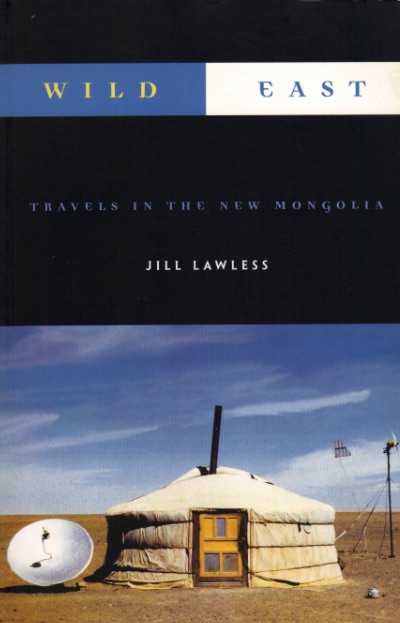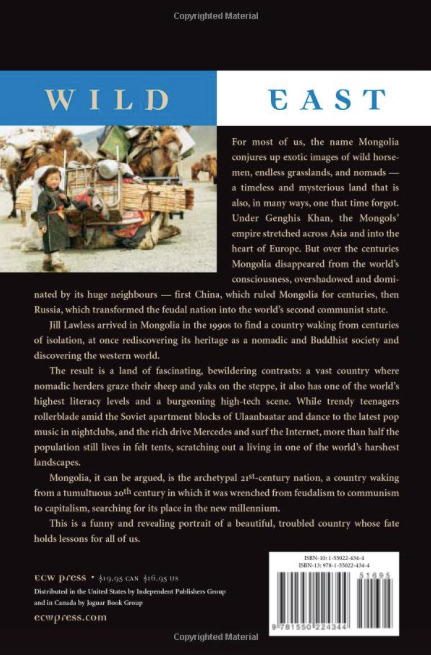

Southern Innovator Magazine Issue 5: Waste and Recycling, Editor and Writer: David South (ISBN 978-0-9920217-1-9) (ISSN 2222-9280) (Online: ISSN 2227-0523): Southern Innovator’s fifth issue tackles the theme of waste and recycling in the global South. It has unearthed radical new ways to use the Earth’s resources while efficiently raising living standards for the world’s majority. Waste no longer needs to pile up and pollute the environment and communities; it can be a source of wealth and provide sustainable livelihoods.
Radical ways to alter how things are made, such as the production model called cradle-to-cradle, have the potential to meet human needs without harming the environment and human health. Effective use of renewable energy technologies and sources also could eliminate energy poverty in the global South, dramatically raising living standards and boosting human development.
“We are proud to present our first book entry in David South’s 5th Issue of the Southern Innovator Magazine. The general focus of this paper is to show the rise of the south as a strong economic power, this year’s issue is focussing on the dilemma of strong population growth and limited resources with the focus on waste and recycling issues for example the elephant dung paper production in Thailand, the banning of plastic bags in Uganda or the creation of green fashion in China.”NEEMIC
“@SouthSouth1 is one of the best sources out there for news and info on #solutions to #SouthSouth challenges.” Adam Rogers, Assistant Director, Regional Representative, Europe, United Nations Office for South-South Cooperation (UNOSSC)
“Btw, I really enjoyed reading them, impressive work & a great resource. Looking forward to Issue 6. My best wishes to you & your team at SI.”
“… great magazine, nice design.”
On Google Books: https://books.google.co.uk/books?id=6ILdAgAAQBAJ&dq=southern+innovator&source=gbs_navlinks_s
Designed in Iceland
Follow @SouthSouth1


Southern Innovator Magazine Issue 4: Cities and Urbanization, Editor and Writer: David South (ISBN 978-0-9920217-0-2) (ISSN 2222-9280) (Online: ISSN 2227-0523): Southern Innovator’s fourth issue tackled the theme of cities and urbanization in the global South and how innovators are grappling with one of the biggest challenges of our time: the largest migration in history as the world becomes a majority urban place. Southern Innovator profiles new building technologies and innovative designs and also offers social solutions to make living urban better, while improving human development.
“I liked your latest Southern innovator! Always inspiring.” Joana Breidenbach, betterplace.org, Berlin, Germany
“The magazine looks fantastic, great content and a beautiful design!”
On Google Books: https://books.google.co.uk/books?id=9T_n2tA7l4EC&dq=southern+innovator&source=gbs_navlinks_s
Designed in Iceland
Follow @SouthSouth1


Southern Innovator Magazine Issue 3: Agribusiness and Food Security, Editor and Writer: David South (ISSN 2222-9280) (Online: ISSN 2227-0523): Southern Innovator’s third issue tackled the theme of agribusiness and food security in the global South. It found innovators were proving it is possible to boost farm yields with new techniques that are not costly nor harmful to the environment. It also found the rise of new information technologies, such as mobile phones, offers unlimited options to make farming and food distribution more efficient, profitable and food secure. These information technologies can turn small-scale farmers into agribusinesses if applied correctly.
On Google Books: https://books.google.co.uk/books?id=AQNt4YmhZagC&dq=southern+innovator&source=gbs_navlinks_s
Designed in Iceland
Follow @SouthSouth1


Southern Innovator Magazine Issue 2: Youth and Entrepreneurship, Editor and Writer: David South (ISSN 2222-9280) (Online: ISSN 2227-0523): Southern Innovator’s second issue tackled the theme of youth and entrepreneurship in the global South. It discovered a growing youth population across the global South and found a disconnect between the enthusiasm and talent of youth and their ability to connect with local economies. This was causing systemic unemployment among youth and wasting a great opportunity to spur growth and innovation in poor countries.
Southern Innovator chronicled various business models that were applicable to young entrepreneurs. Importantly, the business models have been proven to work in developing countries.
“Thank you David – Your insight into the issues facing us a “global Village” is made real in the detail of your article – 10 out of 10 from the moladi team.” Moladi: Building Communities
On Google Books: https://books.google.co.uk/books?id=Ty0N969dcssC&dq=southern+innovator&source=gbs_navlinks_s
Designed in Iceland
Follow @SouthSouth1


Southern Innovator Magazine Issue 1: Mobile Phones and Information Technology, Editor and Writer: David South (ISSN 2222-9280) (Online: ISSN 2227-0523): Launched in May 2011, the new global magazine Southern Innovator profiles the people across the global South shaping our new world, eradicating poverty and working towards the achievement of the Millennium Development Goals (MDGs). They are the innovators. It chronicles what has been called the Development 2.0 Revolution: the use of innovative new technologies to radically alter the dynamics of development.
Southern Innovator’s first issue tackled the theme of mobile phones and information technology in the global South. It identified mobile phone pioneers and transformative information technologies reducing poverty and boosting human development in the global South. It was one of the first publications to document and capture this trend.
“What a tremendous magazine your team has produced! It’s a terrific tour de force of what is interesting, cutting edge and relevant in the global mobile/ICT space… Really looking forward to what you produce in issues #2 and #3. This is great, engaging, relevant and topical stuff.” Rose Shuman, Founder & CEO, Open Mind and Question Box
“Looks great. Congratulations. It’s Brill’s Content for the 21st century!” Conan Tobias, Managing Editor, Canadian Business
What they are saying about SI on Twitter: From “@CapacityPlus Nice job RT @ActevisCGroup: RT @UNDP: Great looking informative @SouthSouth1 mag on South-South Innovation; @UNDP Great looking informative @SouthSouth1 mag on South-South Innovation; @JeannineLemaireGraphically beautiful & informative @UNDP Southern Innovator mag on South-South Innov.”
“Beautiful, inspiring magazine from UNDP on South-South innovation. Heart is pumping adrenaline and admiration just reading it” Peggy Lee on Pinterest
On Google Books: https://books.google.co.uk/books?id=Q1O54YSE2BgC&dq=southern+innovator&source=gbs_navlinks_s
Designed in Iceland
Follow @SouthSouth1



Designed in Canada
Wild East: Travels in the New Mongolia by Jill Lawless (ISBN 1-55022-434-4): Covering the period of the late 1990s, with Mongolia embroiled in a major economic, social and political crisis, Wild East gives an insightful snapshot of life lived in a country undergoing significant turbulence.
“Jill Lawless’ book is not a scholarly tome per se, yet it is of definite value to the contemporary Mongolian scholar, because it captures a mood flushed out by anecdotal detail of a specific period – detail that only a resident, not a visitor, can really discover. Thus the book provides the researcher with all-important firsthand observations of key social and political events, which give life and context to historical analysis.
“Lawless’ period is 1997-1999, the heart of the tumultuous and ill-spent years of Democratic Coalition Government. These years, not fully representative of Mongolia in the 1990s, were a period of great hopes for democratic flowering and free market enterprise leading the nation to prosperity and progress. The pipe dream was dashed by the immaturity and selfishness of the Coalition party members. Still, those were heady years, and Lawless, as editor of the English language independent newspaper the UB [Ulaanbaatar] Post, was … “ Alicia J. Campi, Mongolian Studies, Vol. 25 (2002), pp. 112-114
“As Canadian journalist Jill Lawless points out in the introduction to this engaging portrait of modern Mongolia, the short version of the country’s history is simple: They came thundering out of nowhere, terrorized and conquered most of the known world, and then they went home.
It’s probably not too much of an exaggeration to imagine Mongol warlords at the peak of their power in the 13th century sitting around with Genghis Khan debating the merits of attacking Russia or sacking Burma. Within a space of a few decades they had subdued an area stretching from Korea to Hungary and Vietnam to Afghanistan.
But the empire of the Khan imploded and the world’s consciousness of these fascinating people, and the great grasslands and deserts of their homeland, faded as they disappeared for centuries under the iron-fisted domination of first China and then the Soviet Union.
In Wild East, Lawless brings us up to date. Yes, more than half the population of this Europe-sized country still lives on the steppes in felt tents with their horses, sheep and yaks.
But now you can surf the Internet in Ulan Bator, find Mercedes in the streets, party in Western-style nightclubs and see trendy teens rollerblading around Soviet-era apartment blocks.
Lawless gives us a revealing, and often amusing, account of her journeys through a beautiful country awakening from a tumultuous era that saw it wrenched from feudalism to communism and then into the uncharted future of rampant capitalism, searching for its future in the new millennium.” The Globe and Mail, Laszlo Buhasz, 25 November 2000


Designed in Mongolia
Environmental Public Awareness Handbook: Case Studies and Lessons Learned in Mongolia by Robert Ferguson (ISBN 9992950137): The Environmental Public Awareness Handbook was published in 1999 and features the case studies and lessons learned by UNDP’s Mongolian Environmental Public Awareness Programme (EPAP). The handbook draws on the close to 100 small environmental projects the Programme oversaw during a two-year period. These projects stretched across Mongolia, and operated in a time of great upheaval and social, economic and environmental distress. The handbook is intended for training purposes and the practice of public participation in environmental protection.
In its 2007 Needs Assessment, the Government of Mongolia found the EPAP projects “had a wide impact on limiting many environmental problems. Successful projects such as the Dutch/UNDP funded Environmental Awareness Project (EPAP), which was actually a multitude of small pilot projects (most costing less than $5,000 each) … taught local populations easily and efficiently different ways of living and working that are low-impact on the environment.” Many of these ideas live on in the work of both the World Bank and UNEP in Mongolia.


Designed in Mongolia
Mongolian Rock Pop by Peter Marsh (ISBN 99929-5-018-8): In the Mongolian language, the book explores how Mongolia’s vibrant rock and pop music scene led on business innovation and entrepreneurship in the country during the transition years (post-1989). Written by an ethnomusicologist, it details the key moments and events in this story, while splicing the narrative with first-person interviews with the major players.





Designed in Mongolia
In Their Own Words: Selected Writings by Journalists on Mongolia, 1997-1999, Editor-in-Chief: David South, Research Editor: Julie Schneiderman (ISBN 99929-5-043-9): In their own words compiles by theme the vast number of stories and features by journalists on Mongolia’s transition experience from 1997 to 1999. A rich and unusual resource for a developing country, this book offers the reader a one-stop snapshot of how a country handles the wrenching social, political, cultural, economic and environmental challenges of changing from one political and economic system to another.
An excellent resource for scholars of austerity crises and for those seeking understanding on how to plot a path out of an austerity crisis. In particular, the collection of articles and stories show the impact austerity has on people and their lives. Unadorned by backward-looking historical narratives, these are accounts fizzing with the energy of the moment: a first draft of a tough time for most Mongolians.
Read online at Google Books or visit the University of Toronto’s Library Catalogue: http://search.library.utoronto.ca/details?3403065
Designed in Mongolia


Mongolian Green Book by Robert Ferguson: In the Mongolian language, the book details effective ways to live in harmony with the environment while achieving development goals. Based on three years’ work in Mongolia – a Northeast Asian nation coping with desertification, mining, and climate change – the book presents tested strategies.

Mongolia Update 1998 Book, Editor and Writer: David South, Researcher: G. Enkhtungalug: Whilst in Mongolia as head of the United Nations’ communications (1997-1999), I wrote an update on how Mongolia was coping with hyperinflation, shock therapy, austerity and the Asian economic crisis. The mission simultaneously had to deal with the 1997 Asian Crisis and the worst peacetime economic collapse in post-WWII history.


This work is licensed under a Creative Commons Attribution 4.0 International License.
ORCID iD: https://orcid.org/0000-0001-5311-1052.
© David South Consulting 2017

